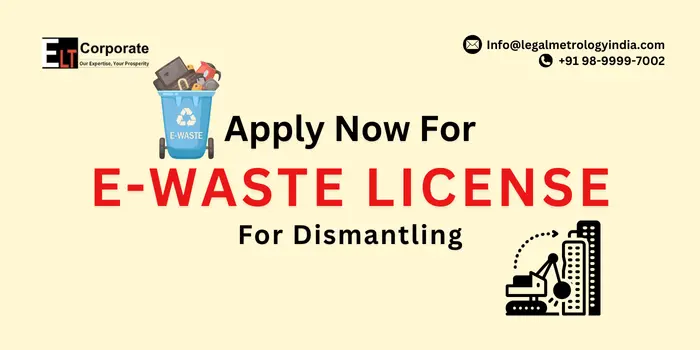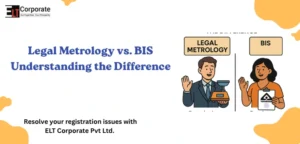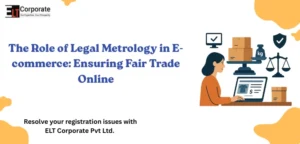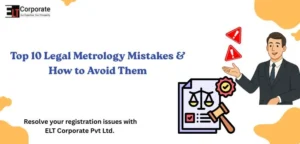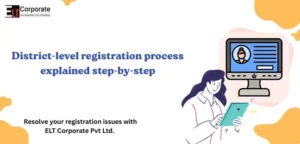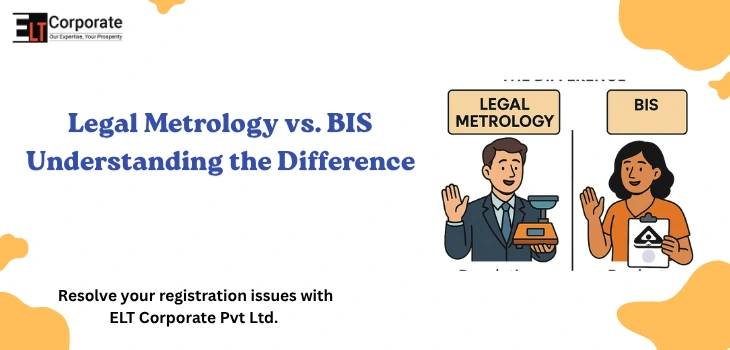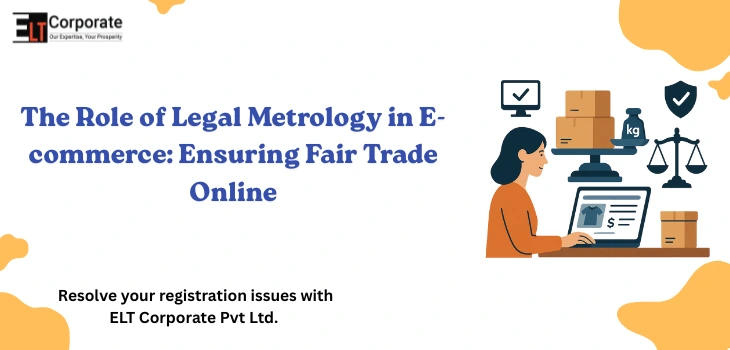E-waste means electronic waste. An E-waste license for dismantling is crucial to avoid adverse effects like hazardous waste; having a license for e-waste will benefit you. Electronic waste produces dangerous chemicals, for example, nitrogen, chromium, PBC, lead, and more.
The inappropriate removal of such items can be hazardous for people and creatures. In this manner, there is a requirement for legitimate e-waste management. This should be possible by gathering E-waste, trailing it by dismantling it and recycling it to prevent contamination and save the environment. Facing difficulties in acquiring an e-waste license for dismantling? Why wait when ELT corporate is here?
What is an E-Waste License for Dismantling?
An e-waste license for dismantling is human intelligence for detaching the components and returning them to the respected recyclers. Elements that can be directly usable shall be transferred to the authorized refurbisher. However, depending on the part’s type, different parts can be shipped off to recyclers with a valid C.T.O. or authorized e-waste recyclers. For instance, aluminium and steel parts with zero-danger material could be moved to the recycler, and those with hazardous elements could be conveyed to an approved e-waste recycler.
Eligibility for Setting Up E-waste Licence for Dismantling Business
To establish an E-Waste license for dismantling, you need to check these pointers:-
- Legal Entity – The entity should be documented as a legal entity (such as – company, sole proprietorship)
- Location – Appropriate office with satisfactory space for dismantling and storing e-waste, meeting environmental and safety standards.
- Infrastructure – Accessibility of suitable machinery, tools, and equipment for safely dismantling and treating e-waste.
- Environmental Compliance – Following environmental laws, including waste management, pollution control, and disposal regulation.
- Skilled Workforce – Well-qualified trainees in handling e-waste safely, including information on hazardous materials.
- Licensing from Authorities – Endorsement from relevant government bodies, like the State Pollution Control Board (SPCB) or the Central Pollution Control Board (CPCB), based on the Local Regulations.
- Safety And Health Standards – Compliance with occupational health and safety to protect workers while dismantling operations.
Documents Required for E-waste License for Dismantling Authorisation
There are many documents you need to get for an E-Waste License for Dismantling authorization; here we have mentioned the list to get it done:-
- PAN Card
- Aadhar Card
- Layout/Plan
- Certification of Incorporation (CIN)
- MOA (Memorandum of Association) (In needed)
- GST Certificate
- Proof Related to the Installment Unit
- A compliance certificate of effluent and emission is needed, as well as treatment and removal of dangerous squanders, as relevant, from the individual SPCB or other competent agency, in the event of renewal.
- DIC (District Industries Centre) or any other competent agency granted the registration certificate.
- Consent issued by the State Pollution Control Board (SPCB) under The Air (Prevention and Control Pollution) Act, 1981, and The Water (Prevention and Control Pollution) Act, 1981
Process for Obtaining E-Waste License for Dismantling Authorisation
E-waste Management Act, of 2016 governs the process for getting e-waste dismantle authorization from the state pollution control board. The procedure includes implementation, reviewing the submitted application, and permitting the license.
- Application Submission – Provide an application to the appropriate authority, such as the State Pollution Control Board (SPCB) or Central Pollution Control Board (CPCB), based on the region.
- Document Preparation – Submit the required documents
- Details of business registration
- Certificate of environmental compliance
- Plan of waste management
- Details of infrastructure – facility layout, machinery
- Trained workforce and safety measure details
- Site Inspection – Respected authorities will inspect the facility to verify the infrastructure and safety.
- Compliance Verification – The authorities evaluate compliance with e-waste management and environmental regulations. This may include guaranteeing that the facility has essential safety equipment, pollution control measures, and waste disposal.
- License Issuance – If everything is correct, then the authority will grant an e-waste dismantling license.
Benefits of E-waste Dismantling
As dismantling is a part of e-waste recycling, numerous benefits exist. We can check this by increasing the investment and market of the e-waste recycling plant. In March 2021, India registered 400 e-waste recyclers with an annual capacity of recycling 1.07 million tons annually. The biggest e-waste recycling facility in India, keeping five ISO certificates, can manage approximately 96,000 electronic waste annually.
Timeline for Securing E-Waste License for Dismantling
It usually takes 2 to 6 months to secure an e-waste license for dismantling. However, this can differ as per the update and other updates of the system. Every enterprise should get in touch with the best regulatory consultancy to know all the details as per your needs.
What are the Components of E-Waste Management?
Usually, e-waste management includes processing electronic waste to protect the environment and human beings. Here is a table you can check to know all the details related to components of e-waste management:-
| S.No | Component of E-Waste Management | Description |
|---|---|---|
| 1. | Collection | Collecting old or broken electronics from homes, businesses, or recycling centers. |
| 2. | Sorting | Splitting different types of e-waste (such as phones, computers, and TVs) depends on the materials or the type of device. |
| 3. | Recycling | Removing invaluable substances like metals like (gold, copper) or plastic from e-waste to recycle in new products. |
| 4. | Disposal | Securely getting rid of e-waste that cannot be recycled or reused, making sure that dangerous substances don’t spread into the environment. |
| 5. | Treatment | Using techniques to remove harmful chemicals such as lead or mercury, that are mostly found in electronics. |
| 6. | Refurbishment | Fixing old electronics to create usable again, reducing the requirements for fresh products. |
| 7. | Public Awareness | Teaching people about proper e-waste disposal and the importance of recycling. |
All these points assist in decreasing the dangerous side effects of e-waste on the ecology and recovering important resources.
Conclusion
The increasing risk of electronic waste (e-waste) demonstrates substantial environmental and health risks because of the hazardous substances present in electronic devices. Complete management through an e-waste license for dismantling and recycling is important to reduce these dangers and promote environmental sustainability. Getting an e-waste license for dismantling ensures compliance with regulatory needs and encourages trustworthy handling of e-waste. So, it makes sense that every business that’s working in electronics should have an EPR license.
FAQ
What is E-Waste Becoming a Bigger Problem?
One of the waste classifications with the rapid worldwide development is electronic waste or e-waste. More established gadgets are discarded because of the quick progress of new technology which is concerning.
How to Get an EPR Certificate?
To get the EPR certificate in India one needs to provide a proper application to the member secretary Central Pollution Control Board according to the E-Waste (M)Rules, 2016. Section 2.1.1 to 2.1.7 of Form 1 should submit the legal information regarding the channelling of e-waste.
Who Pays EPR Fees?
Manufacturers who package on the marketplace will be compensated 100% for the EPR Charge.
Who is Eligible for EPR?
All the manufacturers, producers, and importers are eligible to apply for an EPR certificate.
Where Can I Get My EPR?
You can get EPR from PRDA (Personnel Records Displays Application) can be approached off the Air Force Portal Website. To recover the EPRs you will require the last and first name of the Airman, or their social security number.
Can I Import E-Waste?
No, perilous or any kind of waste from any nation is allowed to import to India, for scrapping as per hazardous and other wastes (Management and Transboundary Movement) Rule, 2016.

